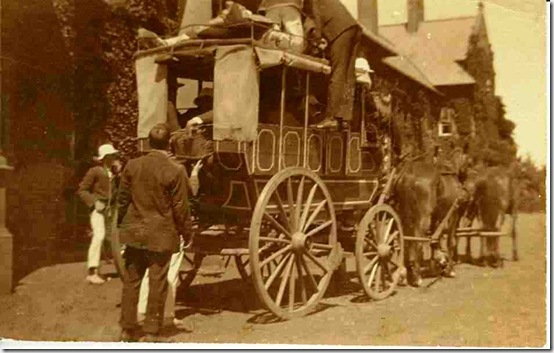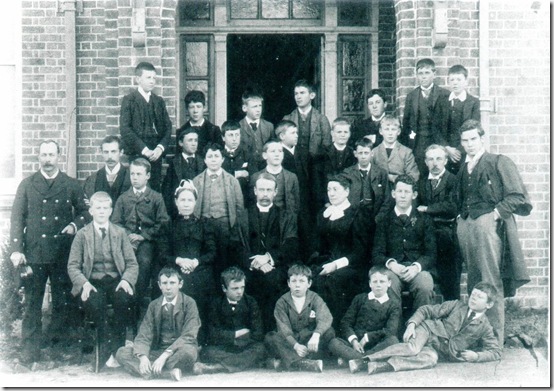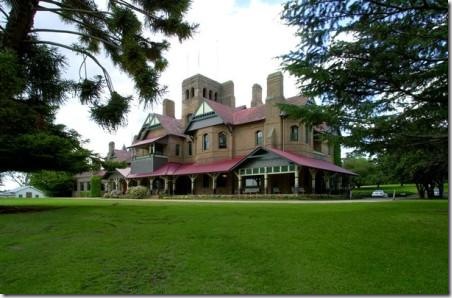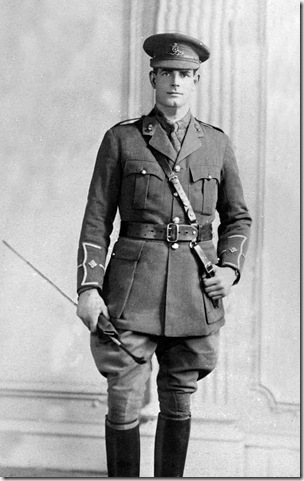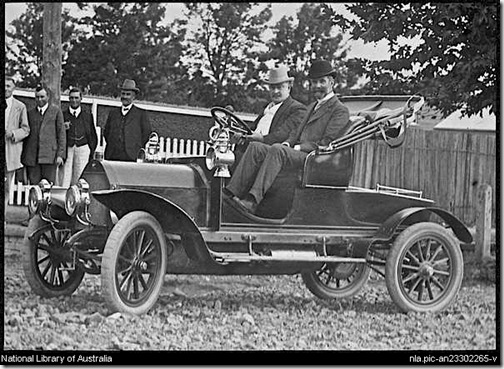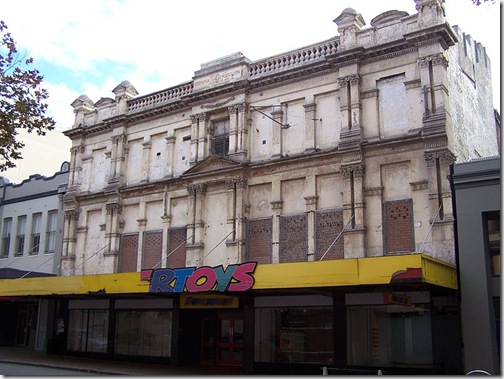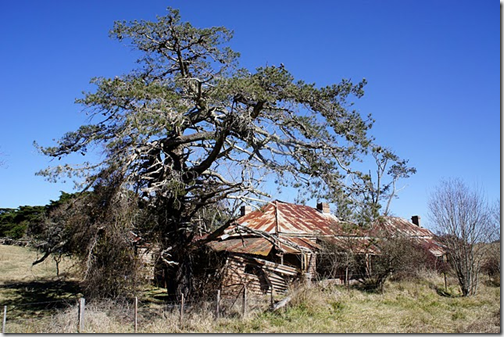Note to readers: This post appeared as a column in the Armidale Express on 17 August 2011. I am repeating the columns here with a lag because the Express columns are not on line. You can see all the columns by clicking here for 2009, here for 2010, here for 2011.
Congratulations to Bob Neville for winning the individual section of the NSW Building Inclusive Communities Award.
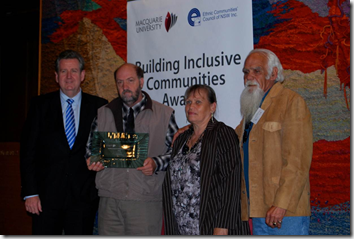 The photo shows left to right – State Premier Hon Barry O’Farrell, Bob Neville Tingha Regeneration Inc, Diane Torrens Chairperson Uniting Aboriginal and Islander Christian Congress and Mr Tim Torrens.
The photo shows left to right – State Premier Hon Barry O’Farrell, Bob Neville Tingha Regeneration Inc, Diane Torrens Chairperson Uniting Aboriginal and Islander Christian Congress and Mr Tim Torrens.
The prize was awarded for his leadership of the Tingha Regeneration Program which is not only designed to rebuild the community, but also seeks to provide a model for many struggling communities throughout Australia.
Back in February 2007, Professor Tony Vinson released a national report into Australia’s poor towns, those communities most affected by poverty and community development.
The preceding November, the then State Government had released its state plan. I examined it in detail at the time to try to assess the extent to which it might meet New England’s needs.
My conclusions were not positive. The various measures proposed were fragmented and took no account of the underling economic and geographic linkages across the whole North. I concluded that even if every one of the targets set in the plan were achieved, New England’s core needs for economic and community development would not be addressed.
Now when I came to look at Professor Vinson’s study, I found that nearly all the poor towns identified in NSW were in the broader new state New England. Every part of New England was represented, from the lower Hunter to the border, on the coast, the tablelands, the slopes and plains.
Tingha was one the towns identified by Professor Vinson. It ranked low on every positive indicator, high on every negative indicator. It was, in fact, one of the poorest communities in Australia.
The problem with community decline is that it can become entrenched. As it does, the community’s capacity to respond further diminishes. Once intergenerational disadvantage – the transmission of disadvantage through generations – emerges, recovery becomes still harder. People give up hope.
In September 2008, Bob launched a program to try to turn this cycle around.
While working as Economic Development Manager with Guyra Shire Council, Bob had established working relationships with Tingha people. Through his experience in working with small communities at every level, Bob had developed a holistic approach to community development. He chose Tingha as a potential model community for the first test implementation of his small community regeneration program (Community Gold Program).
Bob approached the Uniting Aboriginal & Islander Christian Congress (UAICC) with a proposal to take on a facilitator role to implement and test the program in Tingha. The UAICC had been involved in Tingha for over twenty two years, but was now seriously considering withdrawal because of constant failure.
The UAICC accepted Bob’s offer.
I first wrote on Bob’s work back in February 2009. I was interested in it because of my interest in community development. However, I had also just been re-reading Helen Brown’s history of Tingha. I therefore emailed Bob with various tourist promotion suggestions.
Bob explained that it was just too early to try this type of thing. If the community development program was to work, it had to start at the base and then build up. Once basic building blocks were in place, then broader promotion would become possible.
Bob’s reply illustrated one key difficulty in effective community development in circumstances where the very fabric of the community has become frayed. If you are going to attract visitors, you really need some accommodation; the town needs to be welcoming; you need trained volunteers; and all this takes time.
Bob’s approach has been slow and painstaking, working with the community to try to build support. This is micro level work, creating and sustaining small projects that can meet needs, increase skills, demonstrate success and thus build morale.
Critically, the process has to be broadened beyond the facilitator so that it becomes self-sustaining.
I am not close enough to the project to make a full, objective, judgement. However, on the surface, it’s already been a considerable success.
If we look across the dimensions of the work, we find involvement at school level, women’s exercise groups, skills training, a refurbished caravan park, an internet centre and beautification projects. Most recently, a butcher’s shop opened.
This is slow, hard, grafting work. Disappointments are frequent. It’s only looking back that progress becomes clear.
On 26 October, a gathering in Tingha at the regenerated Tingha Gems Caravan and Camping Park, 91 Swimming Pool Road, will launch the community regeneration program nationally. Those speaking include Preston Campbell, Nathan Blacklock, Tony Windsor and Richard Torbay
I congratulate Bob on his work.
